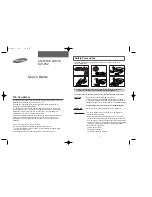
Appendix A • Falk Quadrive Shaft Mounted Drives Model A
(Page 28 of 52)
Sizes 5107-5315
378-200
(PN-2128394)
Rexnord
January 2019
3001 W. Canal St., Milwaukee, WI 53208-4200 USA
Supersedes 04-17
Telephone:
414-342-3131
Fax:
414-937-4359
www.rexnord.com
FOOD GRADE LUBRICANTS
Guidance for selecting petroleum-based and synthetic-
based food grade lubricants are shown below in Table 8
For general lubrication guidelines, refer to the first part of
the "Lubrication Recomendation" Section
FOOD GRADE LUBRICANT SELECTION PROCESS
1 Refer to Table 9 or 10 for proper lubricant viscosity
grade based on ambient temperature range
2 Refer to Table 8 for summary of food grade lubricant
type
3 Using proper food grade lubricant table and viscosity
grade, select desired lubricant manufacturer name
4 Refer to Table 2 for approximate oil capacity to
purchase
TABLE 8 — Summary of Food Grade
Lubricants and Greases
Petroleum-Based
R & O Inhibited
See Table 11A
Extreme Pressure (EP)
See Table 11B
Synthetic Lubricant, Polyalphaolefin Type (PAO)
R & O Inhibited
See Table 12A
Extreme Pressure (EP)
See Table 12B
Synthetic Lubricant, Polyalkylene Glycol Type (PAG)
Extreme Pressure (EP)
See Table 13
Food Grade Grease
See Table 14
DO NOT use in drives equipped with internal backstop
FOOD GRADE LUBRICANTS (TABLES 11A, 11B, 12A,
12B, 13 & 14) —
Food grade lubricants are a class of
lubricants registered as H1 by NSF, National Sanitation
Foundation They contain base stock and additives which
comply with Food and Drug Administration Title 21 CFR
178 3570 regulations for lubricants with incidental food
contact Base stock can be petroleum oil or different types
of synthetic lubricant Food grade lubricants are not same
as biodegradable or environmentally friendly lubricants
Rust and corrosion inhibitors used to protect gear drive
during shipment are not qualified as food grade fluids Flush
out inhibitor oil before filling with food grade lubricant
Tables 11A, 11B, 12A, 12B, 13 & 14 list food grade
lubricants that have performance properties meeting
Rexnord/Falk specifications They are not exclusive
recommendations but serve as a guide for making proper
lubricant selections
CLIMATE CONDITIONS — Ambient temperature in
immediate vicinity of gear drive is very important for
determining viscosity grade. Table 9 provides viscosity
grade selections for petroleum-based lubricants. See
Table 10 for synthetic lubricants.
TABLE 9 — Viscosity Grade Recommendations
For Food Grade Petroleum-Based
Lubricants
Ambient Temperature
Range
+30° to +90°F
(-1° to +32°C)
+70° to +125°F
(+21° to +52°C)
ISO Viscosity Grade
220
320
AGMA Viscosity Grade
5
6
c
Gear drives
NOT
equipped with internal backstop may widen the ambient temperature range to -18° to +125°F (-28° to +52°C).
TABLE 10 — Viscosity Grade Recommendations for Food Grade Synthetic Lubricants
Ambient
Temperature
Range
Cold Climates
Normal Climates
–30° to +10°F
(–34° to –12°C)
–15° to +50°F
(–26° to +10°C)
0° to +80°F
(–18° to +27°C)
+10° to +125°F
(–12° to +52°C)
+20° to +125°F
(–7° to +52°C)
ISO Viscosity Grade
32
68
150
220
320
AGMA Viscosity Grade
O
2
4
5
6
Polyalkylene glycols (PAG) are another class of synthetic
lubricants They have similar performance properties
as PAO synthetics — low pour point, stable at elevated
temperatures, and high viscosity index PAG's have
exceptional tolerance to water contamination
WARNING:
Polyalkylene glycols (PAG’s) are not
compatible with petroleum mineral oil or PAO synthetic
lubricants and must not be topped off with either lubricant.
In addition, petroleum mineral oils or PAO synthetic
lubricants must not be used to top off systems containing
PAG’s. Do not use PAG’s in gear drives with painted interior
housing walls unless paint compatibility is checked.
Compatibility with oil seals and gasket materials must be
checked prior to use. PAG lubricants are not compatible
with polycarbonate sight glass. Use glass sight glass.
CAUTION: EXTREME PRESSURE (EP) LUBRICANTS &
INTERNAL BACKSTOPS —
Do not use EP lubricants in
drives equipped with internal cartridge type backstops.
These lubricants are listed in Tables 11B, 12B & 13.
LUBRICANT ANALYSIS AND CHANGES
OIL ANALYSIS REPORT (FOOD GRADE)
— Checking oil
condition at regular intervals is recommended Analyze oil
samples approximately every 1000 hours for food grade
petroleum lubricants or every 3000 hours for food grade
synthetic lubricants In the absence of more specific limits,
the guidelines listed below may be used to indicate when
to change food grade lubricants:
1 Water content is greater than 500 ppm (parts per
million) (0 05%)
2 Iron content exceeds 150 ppm
3 Silicon (dust/dirt) exceeds 25 ppm, above reference
sample from new oil container
4 Copper content exceeds 75 ppm
5 TAN (Total Acid Number) 50% increase above
reference sample from new oil container
6 Viscosity changes more than ±15%
7 Solid particle contamination code exceeds 25/22/18
for particle sizes ≥4/≥6/≥14 microns, respectively per
ISO 4406
















































